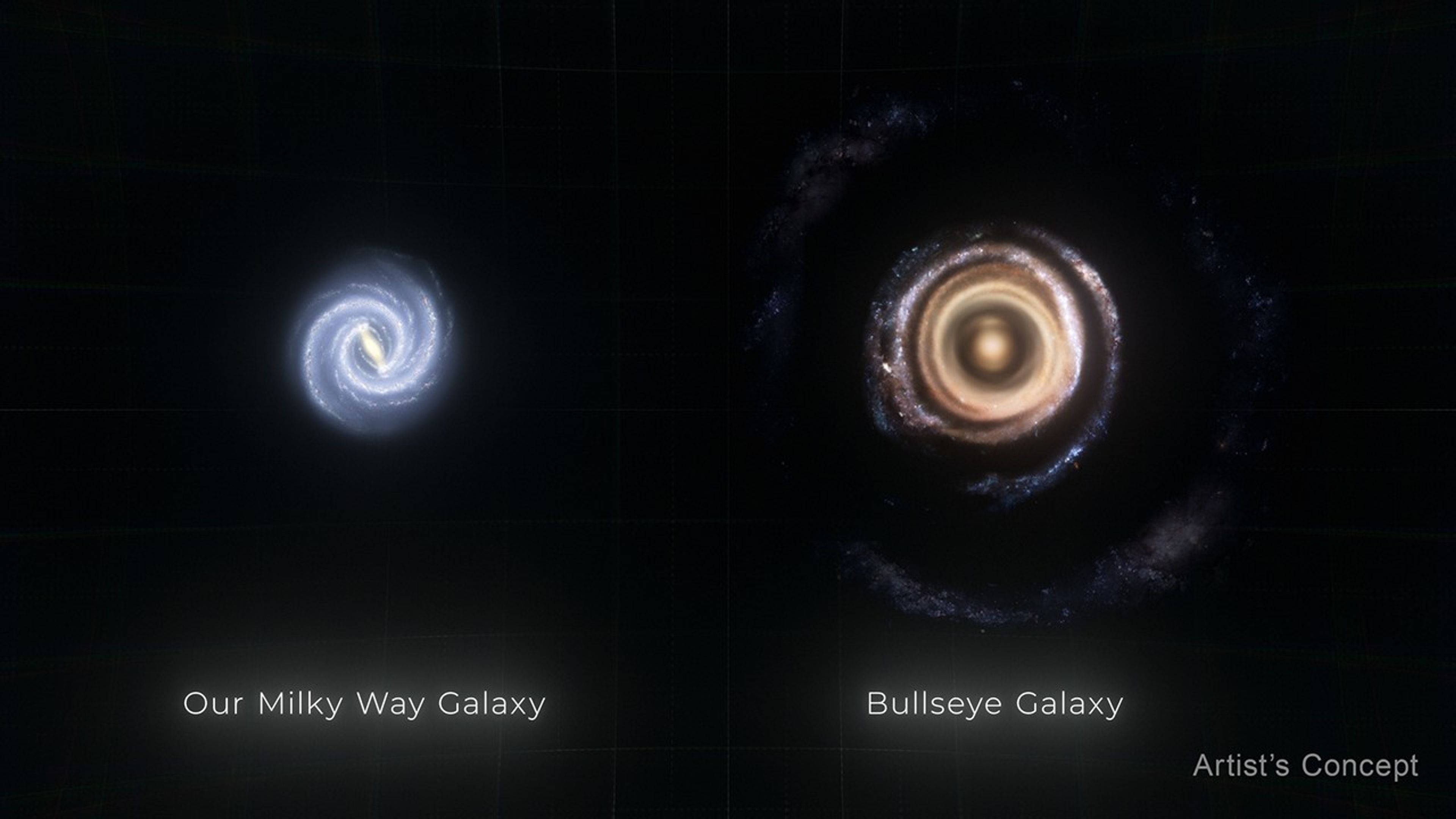Galaxy LEDA 1313424 is a beauty. It is 2.5 times the size of the Milky Way and has something no other galaxy has: A series of concentric rings, nine to be exact. This is more than other known galaxies, which usually have just two or three rings.
ADVERTISEMENT GO AD FREE
The galaxy has been nicknamed the “Bullseye” galaxy due to its concentric rings – and that is actually sort of how they came about. A much smaller dwarf galaxy passed through the center of the massive galaxy about 50 million years ago, and it is still visible to the center-left of Bullseye.
“This was a serendipitous discovery,” the new study’s lead author Imad Pasha, from Yale University, said in a statement. “I was looking at a ground-based imaging survey and when I saw a galaxy with several clear rings, I was immediately drawn to it. I had to stop to investigate it.”
The team followed up with the Hubble Telescope, which was able to distinguish eight rings in the galaxy. One further ring was seen thanks to the W. M. Keck Observatory in Hawaiʻi. The data paints a clear picture: we are seeing the effect of a galactic collision – a trail of gas stretching 130,000 light-years is visible between the dwarf galaxy and Bullseye.

The Milky Way versus Bullseye.
Image Credit: NASA, ESA, Ralf Crawford (STScI)
“We’re catching the Bullseye at a very special moment in time,” added Pieter G. van Dokkum, a co-author of the new study and a professor at Yale. “There’s a very narrow window after the impact when a galaxy like this would have so many rings.”
While galaxy mergers are a fairly common phenomenon, one galaxy diving through another is not. The effect is like a stone being dropped in a pond, creating waves. Theoretical models had been developed for such a scenario, and they agreed beautifully with the observations.
“That theory was developed for the day that someone saw so many rings,” van Dokkum said. “It is immensely gratifying to confirm this long-standing prediction with the Bullseye galaxy.”
ADVERTISEMENT GO AD FREE
“This would have been impossible without Hubble,” Pasha said.
A 10th ring might have existed, but the team thinks it might have faded by now. The team hopes that more galaxies like these will be discovered.
“Once NASA’s Nancy Grace Roman Space Telescope begins science operations, interesting objects will pop out much more easily,” van Dokkum explained. “We will learn how rare these spectacular events really are.”
The paper is published in The Astrophysical Journal Letters.
Source Link: How This Massive Galaxy Got To Wear Nine Rings